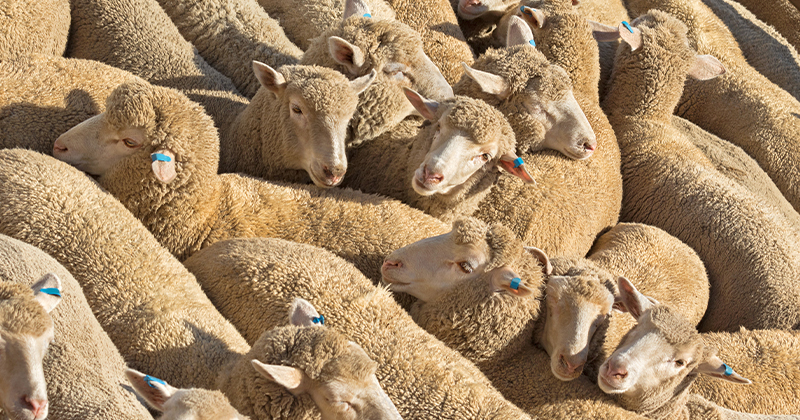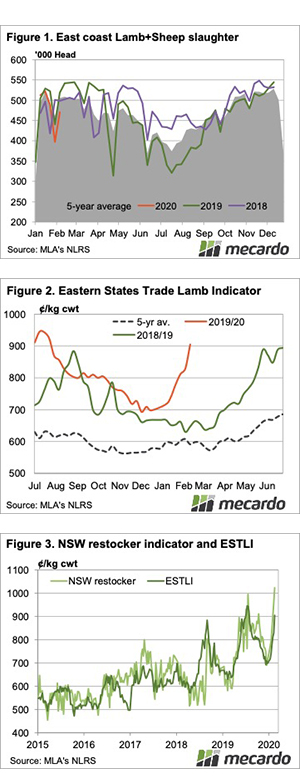Restocker demand booms

Sheep and lamb markets continued to boom this week, with supply tight and demand apparently remaining strong. There is serious support from restockers, who appear to be driving the rise, as grass grows and mouths are sought.

Figure 1 shows in part what is driving the remarkable rally that we are currently seeing. In the first full week after the Australia Day holiday, total sheep and lamb slaughter could only recover to 470,354 head. This figure was 9% lower than the same time last year. It took until June for supply to tighten this much in 2019.
It shouldn’t come as too much of a surprise though. Heavy rains in key sheep regions in NSW will see very few stock from those areas hitting the market. Additionally, demand for restocker lambs has exploded and is creeping into light and trade lamb sectors, helping push prices higher.
On Thursday night the Eastern States Trade Lamb Indicator had hit 905¢/kg cwt, up 76¢ for the week, and just 40¢ shy of the all-time high hit last July (Figure 2).
Restocker lambs have hit a record. In NSW this week, the average price for restocker lambs was 1,023¢/kg cwt (Figure 3). This is the first time any indicator has been through the $10 mark, and shows the extent of restocker demand. Restocker lamb prices have risen 30% this year.
Mutton also hit a record, with the east coast indicator at 683¢ on Thursday. Previous highs for mutton, from last July, were around 620¢/kg cwt. Obviously, we are way past that.
Amid all this, Trade Lambs in WA are making just 648¢ and mutton 439¢. At these levels, there is lots of incentive for lambs and sheep to make their way east. A 20kg cwt lamb is worth $180 in the east, and $124 in the west. There is plenty of fat after freight, especially for restocker lambs.
Next Week
It is so early in the season to have extreme prices. All the charts look rather unsustainable. Lamb producers can point to trade lambs maintaining prices around 900¢ for three months in the winter, which may have seen export markets get somewhat used to high values.
It is hard to see demand for restocker lambs waning, and supply has no chance of increasing until the spring. It would be extraordinary to see restocker prices maintain levels above $10, but it has been 100 years since there were this few sheep in the country and grass supply is booming.



